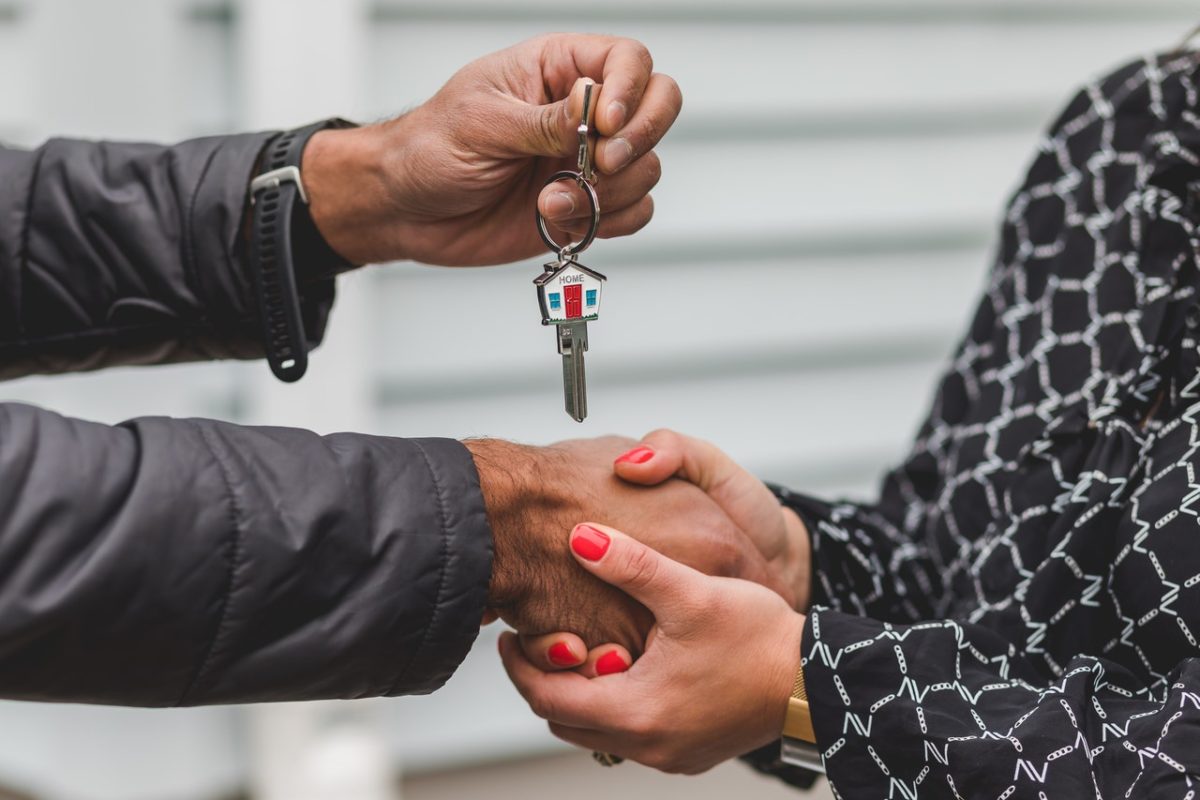7 Things to Know Before Taking Out Your First Mortgage

Introduction
If you’re like me, you probably don’t know much about mortgages. You’ve heard the word thrown around by friends and family members, but it’s not something you think about on a daily basis. Now that I’m getting ready to buy my first home, though, I’m learning that there are quite a few things to consider when looking at mortgages. Here are seven things I wish I had known before taking out my first mortgage:
Different kinds of mortgages
There are several types of mortgages out there, and each one can be a little different. Here are some of the most common ones:
- Fixed-rate mortgages have one interest rate throughout the life of the loan that doesn’t change with changes in market conditions. You will pay this same amount every month until you pay off your entire loan or refinance it again. The advantage to this kind of mortgage is that you know exactly how much money you’ll owe each month and what your payments will be for as long as you keep paying on time. If rates go up, though, so do your payments because they’re based on an index rate (which is set by adding together various factors like inflation and unemployment).
- Adjustable-rate mortgages (ARMs) start with a fixed introductory period that allows homeowners to get into homes at low initial rates before switching over to variable rates that move up or down according to market conditions during subsequent periods (known as “adjustment periods”). After being paid on amortization schedules for anywhere from 15–30 years (depending on when/how often adjustments occur), ARMs convert into conventional 30-year fixed loans which means borrowers retain their original payment schedule but now pay around 2 per cent lower than they had been paying when interest rates were higher—a nice perk if you’ve been planning ahead! You can also take advantage of prepayment penalties if necessary; however, those should be avoided unless absolutely necessary since they could cost upwards of $10K+ depending upon how much extra money is owed.
Don’t have to put down 20 per cent to get a mortgage
You don’t have to put down 20 per cent to get a mortgage. In fact, you can put down as little as 3.5 per cent and still get a mortgage, although some lenders will stipulate that you have at least 5 per cent saved up for your down payment. If you can’t afford a large down payment on your own, don’t worry: there are other ways to finance your home purchase (more on that below).
Down payments are usually the biggest expense in buying a home, so lowering them is one of the easiest ways to reduce how much you pay for your mortgage overall. A lower monthly payment means more money in your bank account each month and less stress about being able to make ends meet each month—both things we all could use right now! The good news is that making those payments count toward reducing interest rates too: if they do go lower than expected due to tax deductions or other factors during negotiations with lenders later on in the process (which happens often), then those dollars saved will go even further toward paying off what’s owed over time without having paid more upfront than necessary just because someone decided not to think things through before making decisions like these.”
The length of your mortgage can affect its cost
The length of your mortgage can affect its cost. The longer the term, the lower your monthly payment and vice versa. If you choose a 30-year fixed rate mortgage loan, for example (the most common type), you’ll pay more in interest over the course of your loan because you’re paying off principal over a longer period of time. You may want to consider whether this is something that will benefit you in the long run or not—and if so, how much does it matter?
If you only plan on staying somewhere for two years and then selling it at about half its value when it comes time to move on, what difference does it make if there’s more interest due at closing? For someone who plans on moving every five years but wants to own instead of rent their entire life, however, those extra few thousand dollars may be worth paying now—especially given that interest rates are still historically low compared with historical norms (which means they probably won’t stay this low forever).
Ways to make it easier to get a mortgage
There are a few ways to make it easier to get a mortgage. Here are some of the most common:
- Good credit: If you have excellent credit, lenders may be more likely to approve your application. You should also have an established history of paying off bills and loans on time.
- Savings for a down payment and closing costs: Most lenders require that buyers put up 20% of the purchase price as a down payment on their homes. This can be difficult if you’re just starting out in your career or don’t have much cash saved up yet. But if you want lower interest rates and other benefits from lenders, then saving money is key!
- A good job: Lenders want proof that they’ll be getting their money back after making your mortgage loan (and then some). Having evidence that your income will be stable for years into the future shows them that this is likely true, which makes them feel more comfortable lending money to you.
- Buying property in an area where prices are rising quickly: When housing prices increase rapidly over time—as they’ve been doing since 2012—lenders often see these trends as sustainable indicators of stability within an area’s economy (which means they’re less likely to foreclose later). If possible, consider buying property in areas whose economies are growing rapidly so that not only do we get better returns but also because it helps us avoid foreclosure risks altogether!
Understand what you’ll be paying each month
- Understand what you’ll be paying each month.
- Make sure you understand what your mortgage payment will be so that you can plan for it and make your payments on time.
- Know why the payment is a good thing.
- The mortgage payment is a fixed cost in your budget, meaning that it’s not going to increase year after year. If you have an adjustable-rate mortgage, however, this may change over time—but regardless of whether or not there are changes, knowing exactly where every penny of your monthly payment goes will help you track down any issues if they do arise.
- Use the money wisely! You’re building equity in something tangible: Your home! This means that over time (and assuming everything goes well), the equity should increase as well—which means two things: First off, when it comes time to sell the house and move onto another one (or rent out), having built up some tangible equity makes selling or renting easier; and second off…you get this awesome feeling of doing something right with your finances!
Some costs are fixed, but others go up and down with the market
When you’re looking at your monthly costs, there are two types: fixed and variable. Fixed costs stay the same every month, like property taxes or HOA fees. Variable expenses, on the other hand, can change depending on market conditions—like interest rates for your mortgage or gas prices for your car.
These variable expenses are ones where you’ll want to be careful about how much you borrow; if they go up unexpectedly (and they often do), it could cost you more than expected each month. But if there’s one thing we’ve learned from homeownership so far: when something goes wrong with your house or car—or some unexpected expense arises—it always seems to happen at the worst possible time! So before you tie yourself down with a big mortgage payment, think about ways that might help lessen those variable expenses when it comes time to make those payments. You never know what might happen in life; but by planning ahead now and being prepared financially for any emergencies that come up later on down the road, hopefully, things will turn out better than ever imagined!
Tax benefits to homeownership
While you may think that your home is a big expense, there are actually some tax benefits to homeownership. The mortgage interest deduction allows homeowners to deduct the interest paid on their mortgage from their income taxes. It’s one of the most valuable tax deductions available and can save you up to $1,000 in federal income taxes annually. This deduction also applies to refinanced mortgages as long as they have been held for at least 120 days prior to the refinancing date. You can also claim property taxes with this deduction if they are over 2% of your adjusted gross income (AGI). In addition, you can deduct home improvement costs that add value or comfort like adding insulation or replacing old appliances with Energy Star-qualified ones.
Additionally, there are several other deductions available: depreciation deductions decrease the value of your property each year it’s owned; homeowners insurance deductibles are deductible; real estate property tax deductions cover any state or local taxes paid on your home, and homeowner association fees (if applicable) may be deductible too!
A mortgage is a long-term commitment
A mortgage is a long-term commitment, but you have some control over the costs associated with it.
- Make extra payments on your mortgage: If you can afford to pay more toward your principal each month, consider doing so. Paying off your loan early will help lower the amount of interest that you pay over time.
- Refinance your mortgage: If interest rates decrease or if you want to take advantage of other features (such as no points) offered by another lender, refinancing may be an option for you. Make sure that this would save money before committing yourself to another term and rate though!
Conclusion
As we said, there’s a lot to think about when you’re looking at getting your first mortgage. But as long as you follow these seven tips, we promise you can have the best experience possible—and get the home of your dreams on time!
